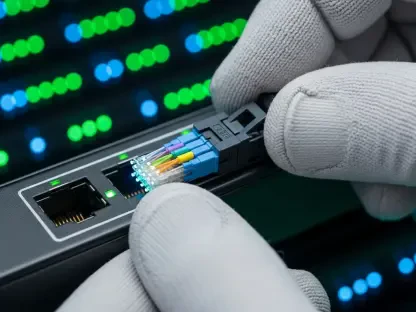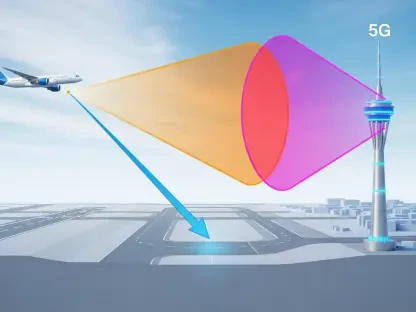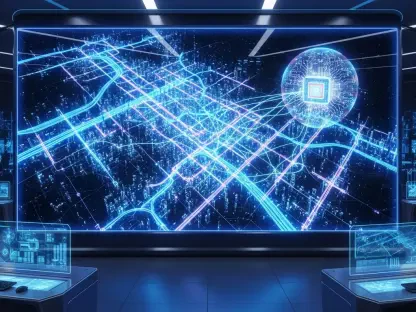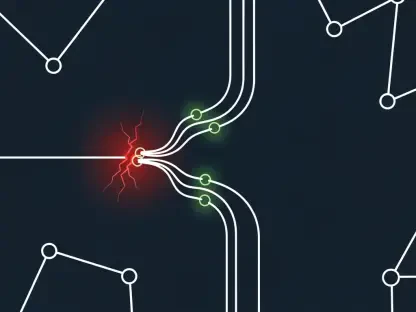Imagine a bustling metropolis where roads are monitored in real-time, hazards are detected instantly, and maintenance costs are slashed by nearly half—all thanks to cutting-edge technology. This vision is becoming a reality in Shanghai, China, through a groundbreaking collaboration between ZTE Corporation, Shanghai Pudong New Area Public Transportation Co., Ltd. (Pudong Bus), and Shanghai Telecom. Announced on November 5, this innovative project introduces an urban cloud inspection system powered by 5G-A, artificial intelligence (AI), big data, and the Internet of Things (IoT). Focused on transforming the maintenance of urban roads and traffic facilities, the initiative promises to enhance efficiency, reduce expenses, and elevate public safety. By replacing outdated manual methods with automated, data-driven solutions, this effort is setting a new benchmark for smart city management and offering a glimpse into how technology can reshape urban governance on a global scale.
Overcoming the Pitfalls of Manual Urban Upkeep
The traditional approach to urban maintenance has long been a thorn in the side of city administrators, plagued by inefficiencies that drain resources and compromise safety. In major urban centers, the cost of maintaining just 10 square kilometers of infrastructure often exceeds 10 million yuan annually, with labor accounting for a staggering 40% of that expenditure. Manual inspections, which require significant manpower—roughly two person-days per kilometer of road—frequently yield inconsistent results due to varying skill levels among workers. Even more concerning is the delayed response to identified hazards, which can take up to 72 hours to address, posing serious risks to public safety. These challenges highlight the urgent need for a modernized system that can streamline processes and ensure quicker, more reliable outcomes.
Beyond the financial burden, the human element in traditional maintenance methods introduces a high margin of error that technology could easily mitigate. Inspectors, despite their best efforts, often miss subtle defects or struggle to cover vast urban areas comprehensively. This results in overlooked issues that can escalate into major problems, further inflating repair costs and endangering citizens. The Shanghai initiative directly addresses these shortcomings by leveraging advanced tools to automate inspections, reduce reliance on manual labor, and accelerate hazard detection. By doing so, it not only aims to cut operational expenses but also to establish a more proactive approach to maintaining the urban landscape, ensuring that cities remain safe and functional for their residents.
Powering Maintenance with 5G-A and AI Innovations
At the heart of this transformative project lies the seamless integration of 5G-A technology with AI, big data, and IoT, creating a robust framework for smart city maintenance. The system operates on a three-level intelligent computing architecture that connects cloud platforms, edge devices, and base stations, enabling real-time data processing and coordination across all components. This setup ensures that information collected from urban environments is analyzed instantly, allowing for swift identification of issues like road defects or damaged traffic infrastructure. Moreover, AI-driven management tools enhance the precision of these inspections, while cutting-edge visualization techniques provide city officials with dynamic, actionable insights to guide their decisions.
Equally impressive is the role of 5G-A in facilitating high-speed, reliable connectivity that underpins the entire operation. Upgraded network capabilities along designated routes support the simultaneous transmission of high-definition video feeds, ensuring that data captured by inspection devices is relayed to cloud platforms without delay. This level of performance is critical for maintaining the fluency and accuracy needed for effective monitoring. Additionally, the incorporation of 3D digital twin technology creates a virtual replica of urban infrastructure, reflecting real-time changes and offering a powerful tool for planning and response. Together, these innovations mark a significant departure from slow, error-prone methods, paving the way for a more responsive and intelligent approach to city upkeep.
Turning Buses into Mobile Data Hubs
A standout feature of this Shanghai-based initiative is the clever use of Pudong Bus’s extensive transportation network as a platform for real-time data collection. With over 300 routes and 3,600 buses traversing nearly every corner of Pudong New Area, the bus system provides unparalleled coverage of urban terrain, making it an ideal testing ground for the cloud inspection system. Selected pilot routes, such as Route 100, which connects key business and tourist districts, and Route 798, which caters to residential and commuting needs, demonstrate the system’s versatility across diverse settings. Buses equipped with advanced cameras and sensors continuously scan for road defects, transforming routine journeys into opportunities for infrastructure assessment.
This innovative approach maximizes existing resources while minimizing the need for dedicated inspection vehicles or personnel, thereby driving down costs. The data gathered by these mobile units feeds directly into the cloud system, where it is processed and analyzed to pinpoint issues with remarkable precision. This method not only ensures comprehensive monitoring of urban areas but also leverages the daily movement of buses to maintain constant vigilance over infrastructure health. By turning public transit into a tool for city maintenance, the project illustrates how smart solutions can integrate seamlessly into everyday operations, offering a scalable model that other municipalities could adapt to their own transportation networks.
Demonstrating Impact and Potential for Growth
Initial results from the pilot program in Pudong New Area reveal the transformative potential of this technology-driven approach to urban maintenance. The cloud inspection system has achieved a remarkable 40% reduction in costs compared to traditional methods, alleviating the financial strain on city budgets. Simultaneously, it boasts a detection accuracy rate exceeding 90%, ensuring that issues like road cracks or damaged signage are identified with unprecedented reliability. These outcomes signify a major leap forward in operational efficiency, as well as in the ability to process and act on vast amounts of data in real time, setting a new standard for how cities manage their infrastructure.
Looking beyond immediate benefits, the success of this initiative positions it as a replicable blueprint for other urban areas worldwide. The scalability of the system means that cities facing similar maintenance challenges can adopt and customize this model to fit their unique needs, driving the digitization of urban transport and governance on a broader scale. This project also underscores the value of integrating advanced technologies into public systems, demonstrating tangible improvements in safety and convenience for residents. As more municipalities take note of these achievements, the potential for widespread adoption grows, promising a future where smart maintenance solutions become the norm rather than the exception.
Shaping the Future of Urban Management
Reflecting on this collaboration, it becomes evident that the project marks a pivotal moment in the evolution of smart cities, showcasing how digital transformation can address longstanding urban challenges. By replacing labor-intensive manual inspections with automated, data-driven systems, the initiative drastically improves hazard detection and response times, ensuring safer environments for citizens. The strategic use of Pudong’s bus network as a data collection platform highlights the power of innovative thinking in maximizing existing infrastructure. As a testament to public-private partnerships, this effort illustrates how collaboration can drive technological advancements for the greater good.
Moving forward, the focus should shift to expanding these solutions to other regions, tailoring them to local contexts while maintaining the core principles of efficiency and accuracy. City planners and policymakers are encouraged to explore similar integrations of 5G-A and AI technologies, investing in scalable systems that prioritize real-time responsiveness. Additionally, fostering partnerships between technology providers and municipal authorities will be crucial in sustaining momentum. This pioneering work in Shanghai serves as an inspiring example, urging global urban centers to embrace intelligent management practices that enhance quality of life and build resilience against the demands of rapid urbanization.









